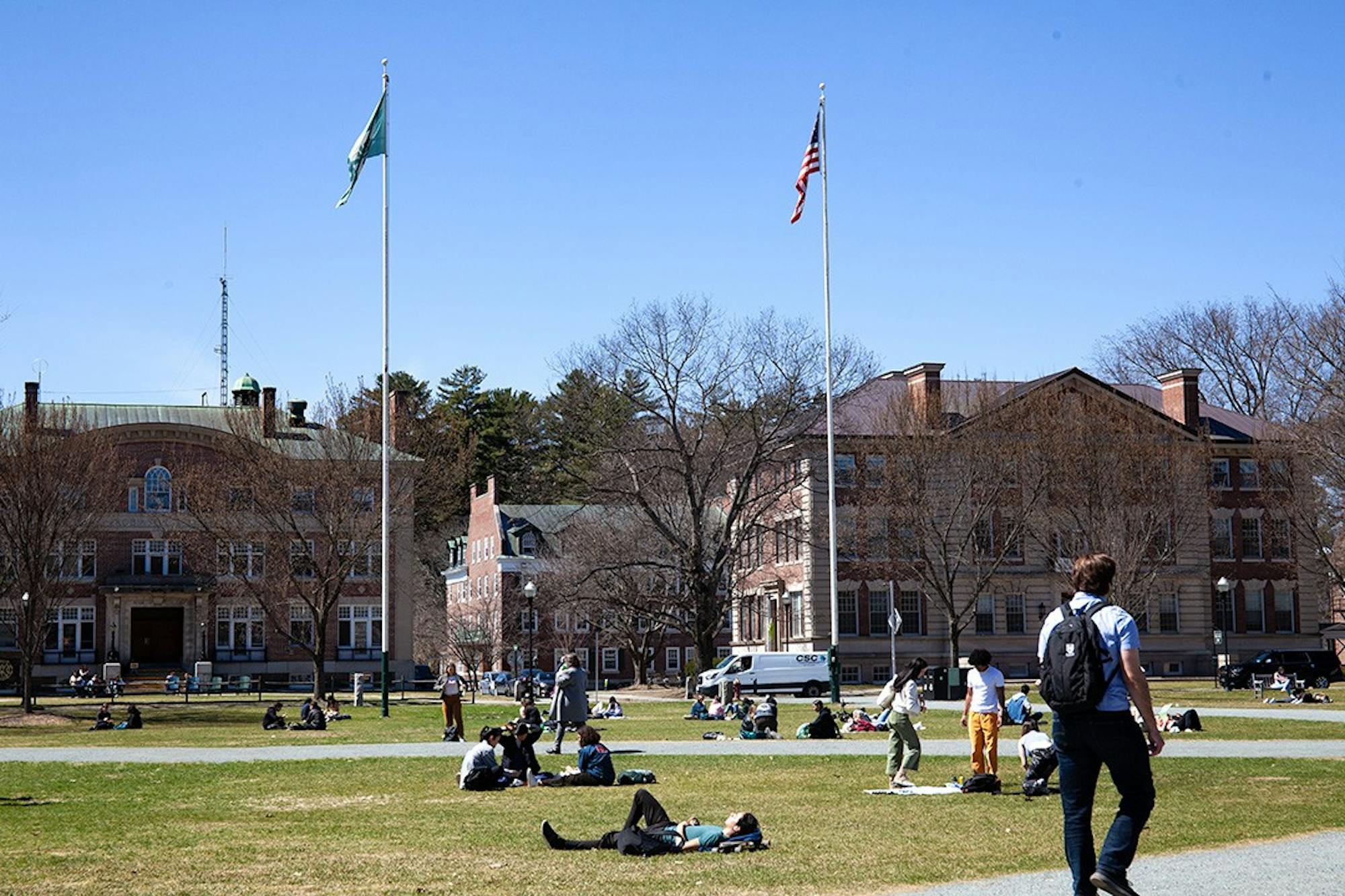Dartmouth Student Government announced that Wi-Fi would soon be available on the Green in a campus-wide email on Dec. 20, 2022, a result of a collaboration between the DSG Subcommittee on Technology and College Information, Technology and Consulting.
According to College chief technology officer Felix Windt, the service would likely be available to students within the calendar year and that it has been a request from students for “over a decade.” Wi-Fi on the Green is just the first step toward making Wi-Fi available in other outdoor spaces across campus, such as Baker Lawn and Tuck Drive, Windt added.
The largest current barrier to the project is the cost, which is estimated to be on average about “$10,000 per wireless access point,” Windt said. He also noted that the initial installation process will cost about “a quarter of a million dollars.”
As announced in the email to the campus, Wi-Fi on the Green comes with the “tradeoff” of students’ access to the Xfinity On Campus television. According to Xfinity’s website, Xfinity On Campus is a service that provides free streaming services to all students and access to channels such as ESPN and HBO Max, provided that they live on campus. Windt estimated that the costly service was used for about “nine and a half minutes per student per day,” which he approximates to about “six students watching an hour a day.”
Anthony Fosu ’24, a member of the DSG Subcommittee on Technology, indicated that there was a “pressing need” for “reliable access” to Wi-Fi on the Green, an initiative which started under the previous DSG administration.
“There was a lot of excitement around the prospect of allowing students to be working out in green space in the spring and summer, or even parts of the fall — and especially in the aftermath, and actually in the duration of the ongoing pandemic, when outdoor spaces really caught on and were utilized by students,” Fosu said.
Student response to the announcement has been varied. Catherine Gorman ’23 said she is excited about being able to work on the Green with a reliable internet connection.
“I actually try to work on the Green a lot and I either have to use my hotspot on my phone or just hope for the best,” Gorman said. “I actually took some Zoom classes out there two years ago.”
However, Kevin Guo ’26 believes that Wi-Fi on the Green is unnecessary, especially given that other buildings which already have Wi-Fi access, such as the Collis Center, are just a few steps away. Guo said he used Xfinity On Campus at least once a week.
“I’d rather have [Wi-Fi on the Green] than not have it, but not at the expense of Xfinity,” he said.
Fosu said that Wi-Fi in outdoor spaces would be used by all students compared to Xfinity, the latter of which was only used by a small portion of the student body.
Fosu acknowledged that since the announcement, DSG has received feedback on how much students said they used Xfinity, which he said DSG also wanted to consider. Specifically, Fosu said that DSG is currently working with ITC to help ensure students maintain access to streaming services if necessary, and will release more information in the near future.
Fosu also noted that students can access streaming services through the Dartmouth library, and can continue to use Xfinity On Campus on the televisions in common areas such as in Collis.
“We believe that [Xfinity] would be used on campus the most to watch major sporting events like the Super Bowl and the World Cup, but also…to commune and come together,” he said.
Fosu says that another reason behind the current lack of Wi-Fi coverage on the Green is due to a lack of appropriate infrastructure. In the coming months, Fosu noted that there will be construction on the Green in order to install “access points.”
According to Windt, each wireless access point would be attached to lamp posts around the Green. Each access point would need to connect back to a nearby building that would provide a data connection. These connections would be achieved through an underground conduit that would connect the lamp post access points to the building where the power and data would be sourced from.
Although Windt noted that each access point would be able to support around 40 users, he added that there would be limitations, such as an inability to stream high volume events like Commencement in 4K.
In response to a current lack of consistently reliable Wi-Fi coverage across campus, Windt noted that the College’s Wi-Fi infrastructure has been “dramatically upgraded” over the last three years. The development of Wi-Fi on the Green would also lead to reliable coverage in other outdoor spaces across campus he added.
Additionally, Fosu said that DSG wants students to submit feedback on the strength of WiFi coverage through forms accessible through green posters displayed around campus.
“We’re hoping that students will continue to voice their opinions and their concerns, but especially report these issues.”




